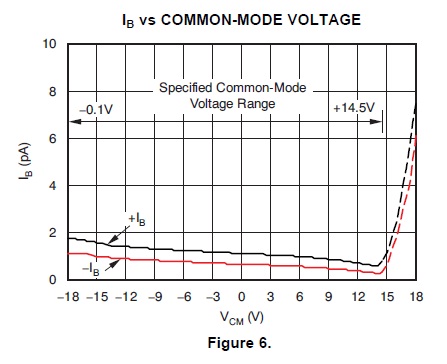Hi people
I have an electrochemical application where i need to measure current in a wide range (microamps to picoamps) and im going to do it with an I-V converter based on the transimpedance amplifier.
I have two devices pre-selected (the OPA140 and the AD795), the OPA would be my choice because of its great characteristics (specially when it comes to offset, and the error produced by it on the current), however, when i compare the Ibias of the device, it has 5 times worst performance than the AD795 (worst case scenario that is)
However, the only graphic on the datasheet about the Ibias (Figure 6 on the datasheet), shows that the Ibias change with Vcm but the limits are basically the supply limits. So, i want to ask you, is that a mistype on the datasheet? or can i use the device with the 2pA max Ibias because i will not have more than 15Vcm on my circuit
Thank you very much and best regards


